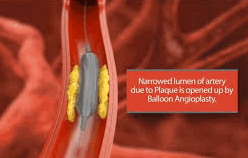
What is coronary angioplasty?
Coronary angioplasty – or PCI and PTCA – is a technique for treating coronary heart disease and angina. It helps improve your blood supply to the heart muscle and can help to relieve angina symptoms. You might also have angioplasty if you’ve already had a coronary bypass but your angina has returned.